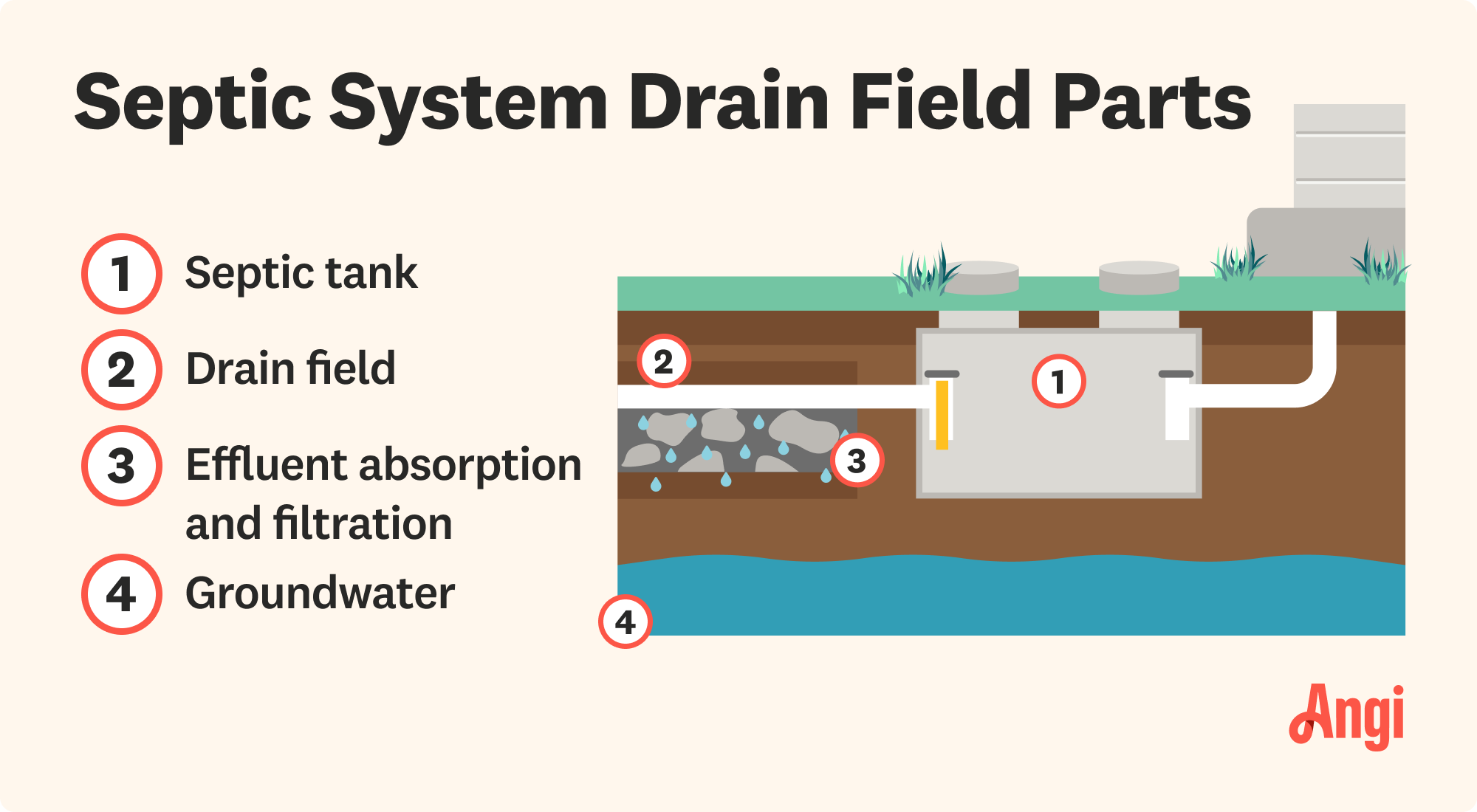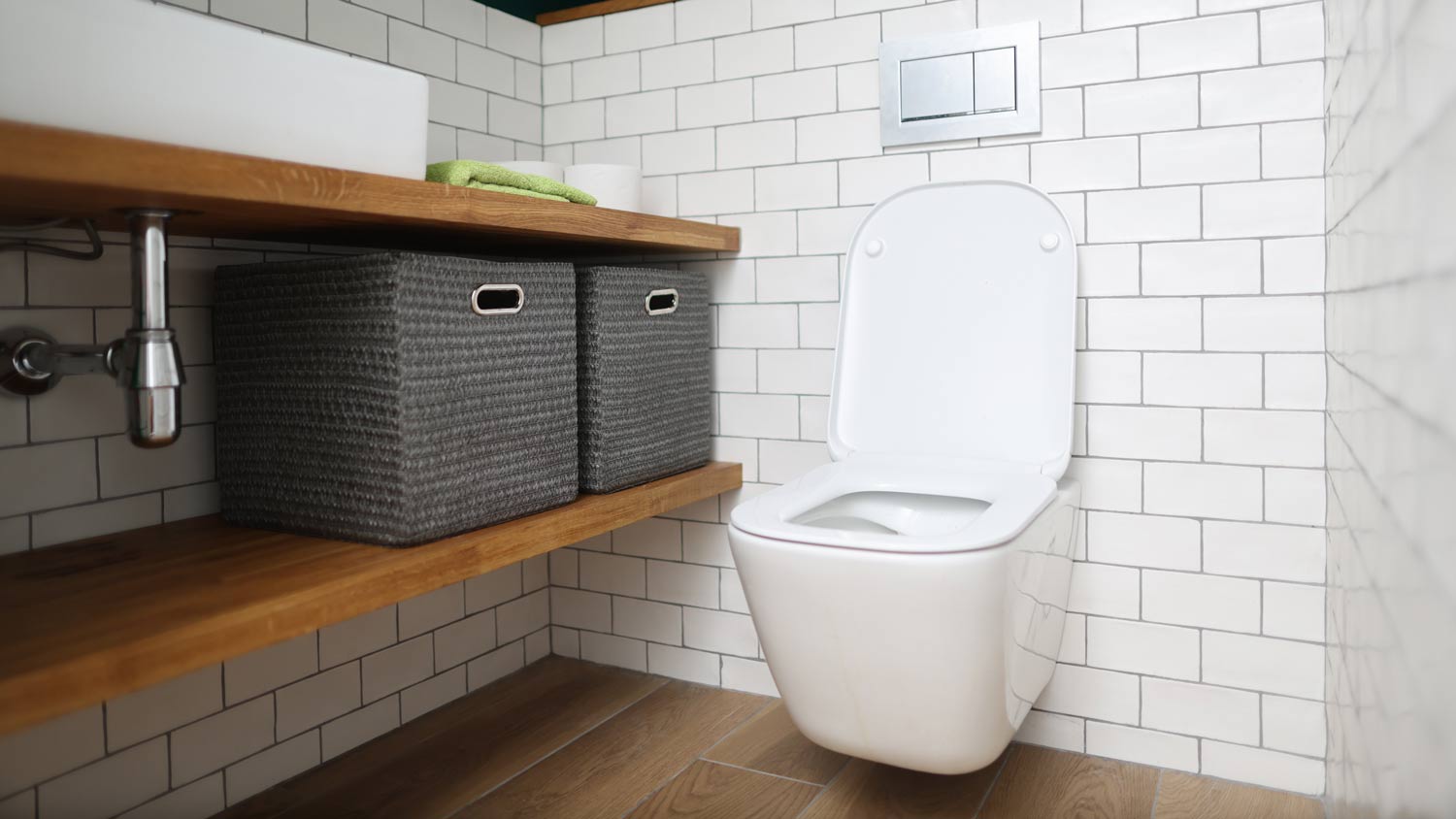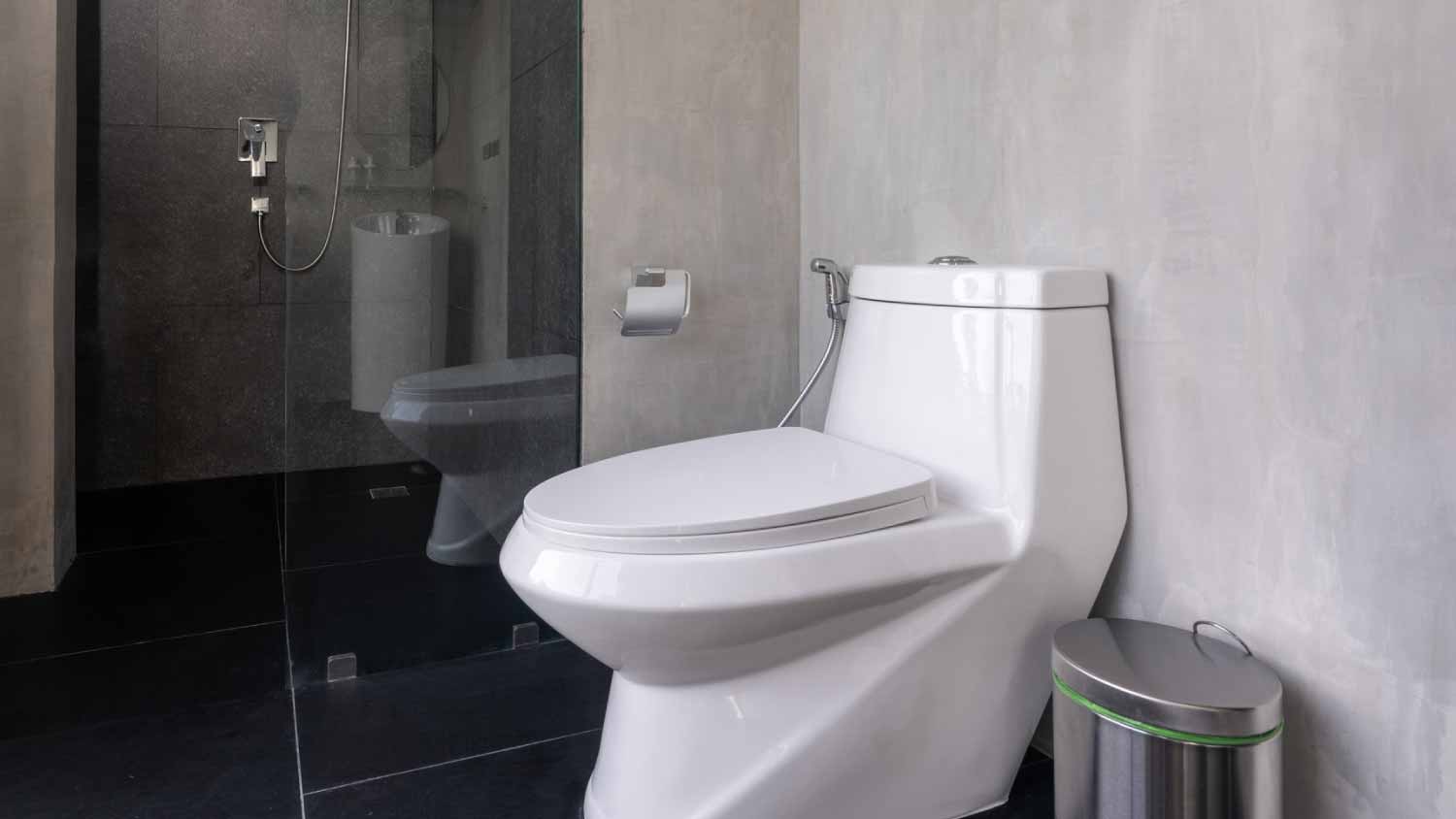
Need to know what sewer line replacement costs in Atlanta, GA? This guide will help you prepare to budget for sewer line replacement done by local contractors.
Keep it flowing, keep it clean


Conventional, chamber, and mound are the most common septic drain field designs.
The best design depends on your property's soil conditions and groundwater levels.
Choosing an improper design can cause backups, groundwater contamination, and more.
Your septic drain field design is one of the most important aspects of your septic system. The drain field ensures wastewater can safely filter through the soil. The design relies on factors unique to your property and location. The wrong design can lead to serious issues, like septic system failure, backups, and contamination of your groundwater. Learn everything you need to know about septic drain field design, so you know which one will work best for your home.

A septic drain field, also known as a leach field, disperses liquid wastewater—or effluent—that flows from the septic tank into the surrounding soil for natural treatment and filtration. After solid waste settles in the septic tank, the effluent travels through perforated pipes. As the effluent seeps out of the pipes, it passes through layers of soil, a natural filter that removes dangerous bacteria, nutrients, and contaminants.
The design of your septic drain field directly affects the efficiency, safety, and lifespan of your entire septic system. Poorly designed drain fields can lead to system failures, such as backups, surface pooling, and groundwater contamination, which can pose health and environmental risks.
"Effluent" is the term for liquid waste or sewage that has been treated in a septic tank or sewage treatment plant. You may also know it as "wastewater."
While there are many types of septic systems for your home, fewer drain field designs exist that suit various systems. Below are the most common septic drain field designs.

A conventional drain field, also known as a trench system, has a series of perforated pipes laid in gravel-filled trenches beneath the ground. Wastewater from the septic tank flows through these pipes, allowing the effluent to seep into the surrounding soil for natural filtration and treatment.
This design is ideal for properties with suitable soil conditions and ample space because it relies on gravity and soil absorption to manage wastewater effectively. The simplicity and cost-effectiveness of conventional drain fields make them a popular choice for residential septic systems.
A chamber drain field uses open-bottom plastic chambers instead of traditional gravel and pipe setups to disperse effluent into the soil. These chambers create a larger surface area for wastewater infiltration, promoting better aeration and treatment within the soil.
The design benefits areas with limited gravel availability or where soil conditions require enhanced drainage. Chamber septic systems are easier to install, require less excavation, and can handle occasional surges in wastewater flow, making them a flexible alternative to conventional designs.
A mound drain field is designed for properties with high groundwater levels, shallow bedrock, or poorly draining soils. Instead of being buried underground, the system requires a raised mound of sand, gravel, and soil to create an artificial drain field aboveground level. Effluent from the septic tank is pumped to the mound, dispersed through pipes, and filtered through each layer before reaching the natural soil.
This design effectively treats wastewater even in challenging conditions. However, it requires precise engineering, regular maintenance, and higher installation costs. Your local septic tank company can provide expert tips on building this type of drain field.
Choosing a septic drain field design largely depends on your property, including the soil conditions, size, and groundwater levels. Local regulations also dictate the type of design.
Your property's soil type must have proper wastewater absorption and filtration without causing pooling or contamination. A percolation test determines how quickly water drains through the soil to find the most suitable design. Larger properties with well-draining soil can accommodate conventional drain fields, while smaller or more constrained properties may require a chamber design.
Environmental factors, such as the depth of the water table and proximity to wells or surface water, impact the design. To prevent contamination, an elevated system like a mound drain field works best with high groundwater levels or shallow bedrock. Local health departments and environmental agencies have regulations governing septic system placement, sizing, and design.
Budget and maintenance requirements should also be factored in, as some designs, like mound systems, have higher upfront costs and ongoing maintenance needs compared to conventional systems
From average costs to expert advice, get all the answers you need to get your job done.

Need to know what sewer line replacement costs in Atlanta, GA? This guide will help you prepare to budget for sewer line replacement done by local contractors.

Need to know what sewer line replacement costs in St. Louis, MO? This guide will help you prepare to budget for sewer line replacement done by local contractors.

Need to know what sewer line replacement costs in Washington, D.C.? This guide will help you prepare to budget for sewer line replacement done by local contractors.

Got a home construction project coming up? Here’s how to find your sewer line from house to street so you can avoid catastrophe.

How long do septic tanks last? It’s a valid question for those who have one. The answer is it varies between 15 and 50 years, depending on several factors.

High utility bills are often a sign of trouble. If you’re wondering, “Why is my sewer bill so high?” review this guide for potential causes and fixes.